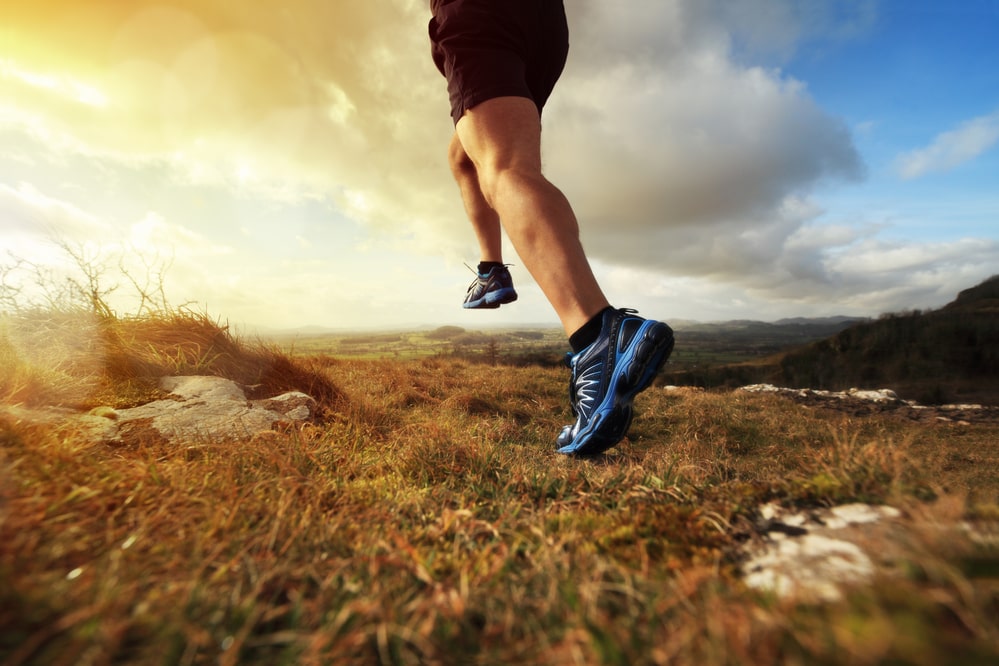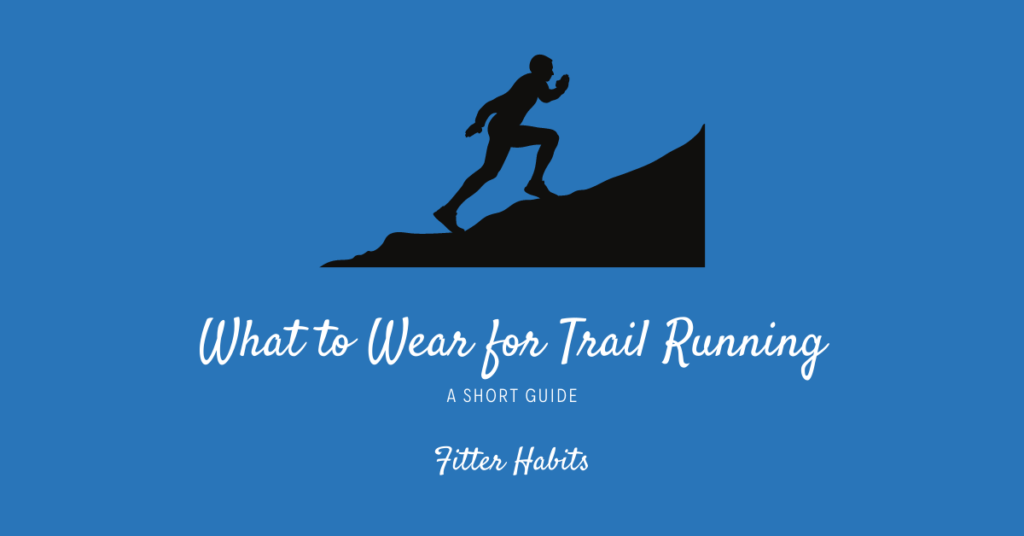This guide explains what to wear for trail running, in both hot and cold conditions.
While getting prepared for a trail run does not require expensive apparel and gear, it’s a good idea to prepare correctly. A minimalist approach is acceptable, provided you choose your gear well.
In this article, we will cover the most important things to wear when you go trail running. Your gear choices should make you both comfortable and safe and ensure that you get the most out of your run.
Contents
- 1 Trail Running Shoes
- 2 Cool Clothes for Warm Months
- 3 Warm Clothes for Cool Months
- 4 Sunglasses or Visors
- 5 A Sports Bra
- 6 Layers for Cold Weather
- 7 Protection From the Rain and Wind
- 8 Suitable Underwear
- 9 Shorts
- 10 Running Tights
- 11 Don’t Forget Accessories for Safety
- 12 The Final Word On What to Wear for Trail Running

Trail Running Shoes
A typical pair of road-running shoes doesn’t have enough traction for rocky or slippy trails.
So, invest a good pair of suitable footwear. These shoes offer your feet just the right amount of protection from blisters and grip for the rough surfaces you find off the road.
That said, trail running shoes aren’t all the same. For example, if your route is dry and soft, as well as flat, go for mountain running shoes with cushioning and defined treads.
If you’re starting with off-road running and want something that can handle just about any surface, you can opt for a multi-purpose pair of trail running shoes.
Cool Clothes for Warm Months
It’s a good idea to wear a hat when you go running on warm days. For starters, a hat shields your face from the sun, and second, it keeps the sweat from flowing into your eyes by soaking up some of it.
There are lots of baseball-like hats that have been made mostly for running. These use breathable and lightweight material to prevent overheating.
If you don’t like the idea of covering all of your head, consider wearing a visor. It would still play the role of shielding you from the sun and your sweat without covering your whole head.
It’s still a good idea to go for a full cap when trail running, however, as it plays the role of protecting your head from ticks and other insects that could bite you or even cause a disease.
Warm Clothes for Cool Months
In cold weather, a thicker hat or beanie plays the role of keeping you warm. You can go for one made of light fleece. If you worry about getting too hot under the cap, opt for a fleece headband, which will cover your ears, but not the top of your head.
It’s also a good idea to wear and water and wind-proof jacket with some ventilation, so it doesn’t soak up with sweat.
Sunglasses or Visors
Sunglasses are useful for keeping little insects out of your eyes and protecting them from low hanging branches that might slap you in the face as you run in the backcountry. If it’s sunny or snowy, they can also reduce glare. It’s also a good idea to apply sunscreen around your eyes, nose, face and ears.
A Sports Bra
For female runners, a sports bra is essential to avoid straining the neck and back and providing proper support for a comfortable run. Look for bras labeled ‘High Impact’, as they wick sweat, dry quickly, and give the correct amount of support for rigorous off-road runs.
Layers for Cold Weather
Layering up is essential when running in lower temperatures.
Avoid wearing cotton as a base layer. Focus on fabrics that are breathable, no matter how many layers you have on. Also, avoid wearing too many layers, as it could lead to overheating.
You can easily remove them until you feel “just right.” You can have a long sleeve shirt with a t-shirt underneath, for example.
A good rule of thumb is to avoid wearing so many layers that you feel warm before a run. Instead, aim for feeling a little chilly before starting. Later, as you move, your body will generate some heat, and that, combined with the layers, will raise your temperature and warm you up.
Avoid Cotton T-Shirts
Running is a sweaty activity.
Cotton gets wet and isn’t in any hurry to lose that moisture. While breathable fabrics help you to maintain your temperature, cotton is likely to make you overheat. Then, because it doesn’t have moisture-wicking capabilities, you’ll feel colder in a wet shirt.
Protection From the Rain and Wind
There are plenty of water-resistant materials on the market, such as Gore-Tex, a waterproof, breathable fabric membrane.
It’s easy to find a shell for the wind or rain, which doesn’t make you any heavier while you run. Some of them are incredibly light while managing to be breathable, waterproof, quick-drying, or windproof.
Well-known companies like Patagonia and Nike make these products with Gore-Tex. It could be worth investing in an outer layer that can protect you.
Suitable Underwear
The kind of underwear you wear is vital for your comfort. If you’re going for a longer trail run, choose technical underwear made or running or shorts with built-in liners. These can help you avoid chafing, as well.
Shorts
Choosing the right kind of shorts for trail running mostly boils down to finding ones that fit. While you’re at it, go for shorts with a built-in liner, as these will make it unnecessary to wear separate underwear.
Running Tights
Tights are a good choice if the temperature is low or it’s wet. Many companies make thermal tights that you can wear if running in the winter or in rainy conditions.
These leggings protect your legs from prickly bushes and thorns. You can choose full-length tights or ones that reach down to your knees or calves.
Don’t Forget Accessories for Safety
If you run at dusk or dawn, you need to make sure you can see and get seen by others. Trail runners can accomplish this with gear that’s either reflective or illuminating.
If you cross any roads on your run, oncoming vehicles must be able to spot you from at least 300 feet away. Look for running gear with reflective stripes, panels, or dots.
You should also wear a small LED wristband or a small headlamp in the dark so you can see ahead of you and avoid getting tripped up.
Water is also essential to safety. Take a water bottle or hydration pack. Even if you don’t think you need one, you will be prepared for unforeseen circumstances if you have one handy.
You can also opt for a GPS watch, like a Garmin, if you are headed on a longer run or running in a place without well-defined trails. These watches will help you find your way back via GPS.
The Final Word On What to Wear for Trail Running
Trail running is a joy. As long as you get the right kind of clothes and gear, it will be both comfortable and enjoyable. The list above is not exhaustive, but it’s an excellent general guide to keep you safe and comfortable on the trail.



